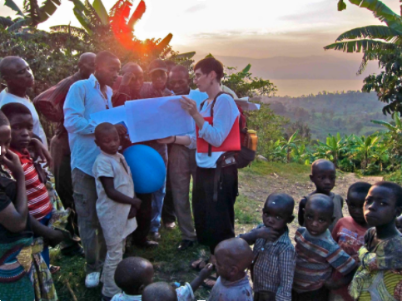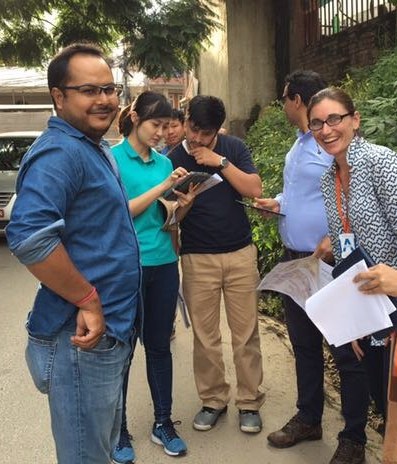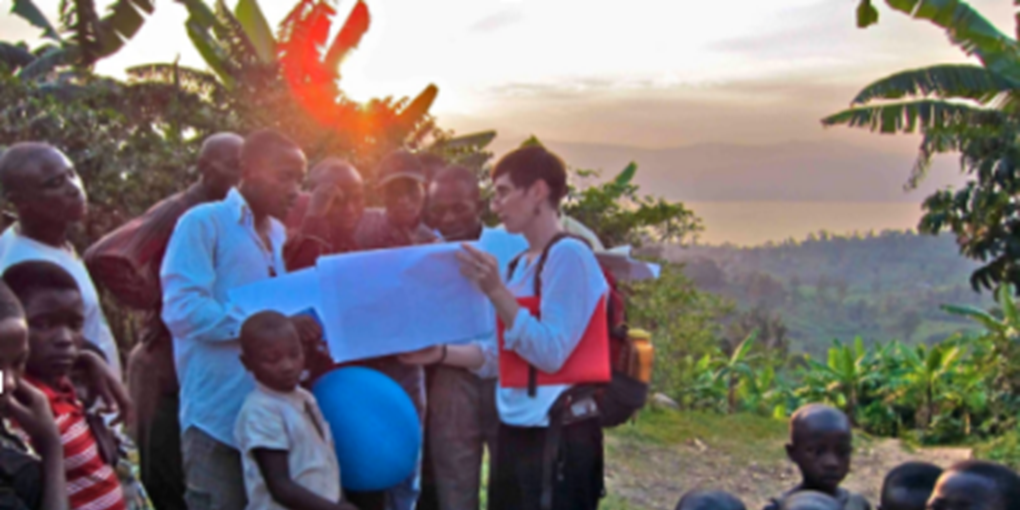-
2010
Dana Thomson and colleagues implemented a gridded population household survey in eastern DR Congo using a LandScan sample frame in the absence of census data.

-
2011
Dana Thomson contacted the WorldPop team (formerly AfriPop) with the idea for GridSample.
WorldPop programmer, Forrest Stevens, volunteered to code the GridSample R algorithm.
-
2012
A paper by Dana Thomson, Michael Hadley, and colleagues was published in BMC Public Health describing the Democratic Republic of Congo (DRC) gridded population survey (Thomson et al 2012).
-
2015
The University of Leeds and HERD International piloted the GridSample R algorithm in an urban health survey in Kathmandu, Nepal using WorldPop individual country data as a sample frame. The team developed methods for implementing gridded population sampling in complex urban settings, though unfortunately, the survey was interrupted by the 2015 earthquakes. They described their rationale and initial experience with gridded population sampling in the Journal of Urban Health (Elsey et al 2016).
-
2016
Dana Thomson and Forrest Stevens published the GridSample R package to the open-source CRAN network with support of Marcia Castro and WorldPop researchers Nick Ruktanonchai and Andrew Tatem (CRAN 2016, Thomson et al 2017). The GridSample R package requires intermediate programming skills and large amounts of computer processing power which makes it largely inaccessible to survey practitioners, especially in low- and middle-income countries.
-
2017
Flowminder Foundation developed a Beta GridSample website based on the functionality of the R algorithm.
The University of Leeds and partners in Nepal, Bangladesh, and Vietnam conducted a large-scale evaluation of gridded population sampling methods and protocols as part of the Surveys for Urban Equity project (Elsey et al 2018). Dana Thomson with Radheshyam Bhattarai and Rajeev Dhungel of HERD International as well as others from the SUE project published a detailed guide to design and implement gridded population surveys in complex urban settings (Thomson et al 2018).
-
2018
With funding from the Bill & Melinda Gates Foundation, DFID and government partnerships, Flowminder Foundation developed the GridSample2.0 algorithm with several new sample design features including implicit stratification by settlement type, more options for allocation of clusters to strata, and three flexible options to define a sample frame from gridded population data (GridSample2.0 on GitHub). The GridSample2.0 algorithm leverages the gridEZ algorithm to generate enumeration zones from gridded settlement and population datasets (gridEZ on Github).
-
2019
www.gridsample.org was updated to run the GridSample2.0 algorithm, and provides users with new options to upload their own survey boundary shapefiles.
Radheshyam Bhattarai joined Flowminder’s GridSample team to help provide technical assistance and training to implement gridded population surveys.


